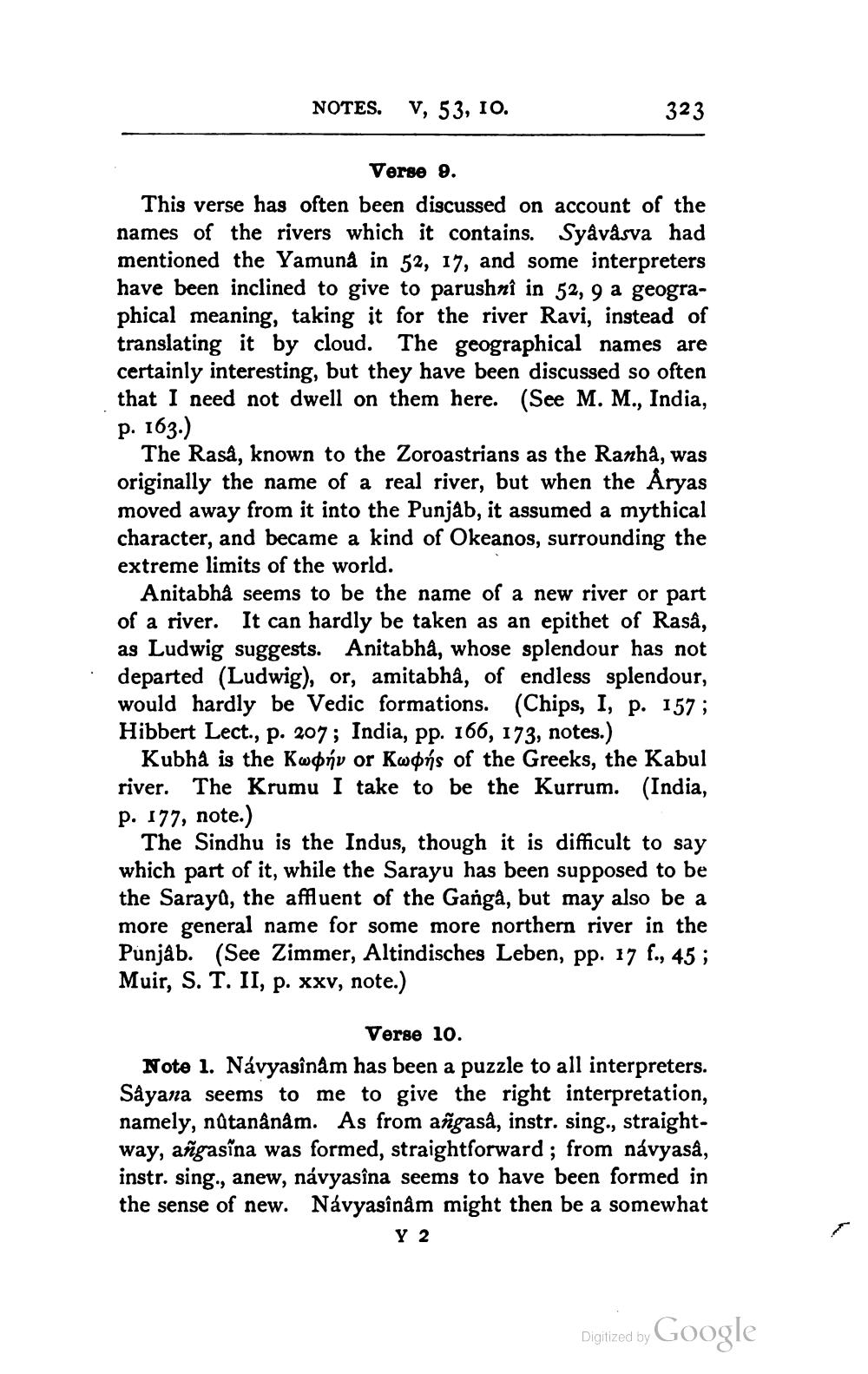________________
NOTES. V, 53, 10.
323
Verse 9. This verse has often been discussed on account of the names of the rivers which it contains. Syavasva had mentioned the Yamuna in 52, 17, and some interpreters have been inclined to give to parushnî in 52, 9 a geographical meaning, taking it for the river Ravi, instead of translating it by cloud. The geographical names are certainly interesting, but they have been discussed so often that I need not dwell on them here. (See M. M., India, p. 163.)
The Raså, known to the Zoroastrians as the Ranhà, was originally the name of a real river, but when the Aryas moved away from it into the Punjab, it assumed a mythical character, and became a kind of Okeanos, surrounding the extreme limits of the world.
Anitabhà seems to be the name of a new river or part of a river. It can hardly be taken as an epithet of Rasa, as Ludwig suggests. Anitabha, whose splendour has not departed (Ludwig), or, amitabha, of endless splendour, would hardly be Vedic formations. (Chips, I, p. 157 ; Hibbert Lect., p. 207 ; India, pp. 166, 173, notes.)
Kubha is the Kwoń or Kwons of the Greeks, the Kabul river. The Krumu I take to be the Kurrum. (India, p. 177, note.)
The Sindhu is the Indus, though it is difficult to say which part of it, while the Sarayu has been supposed to be the Sarayą, the affluent of the Gangå, but may also be a more general name for some more northern river in the Punjab. (See Zimmer, Altindisches Leben, pp. 17 f., 45 ; Muir, S. T. II, p. xxv, note.)
Verse 10. Note 1. Návyasînám has been a puzzle to all interpreters. Såyana seems to me to give the right interpretation, namely, natanânâm. As from añgasa, instr. sing., straightway, añgasina was formed, straightforward ; from návyasa, instr. sing., anew, návyasîna seems to have been formed in the sense of new. Návyasînám might then be a somewhat
Y 2
Digitized by
Digilzed by Google




